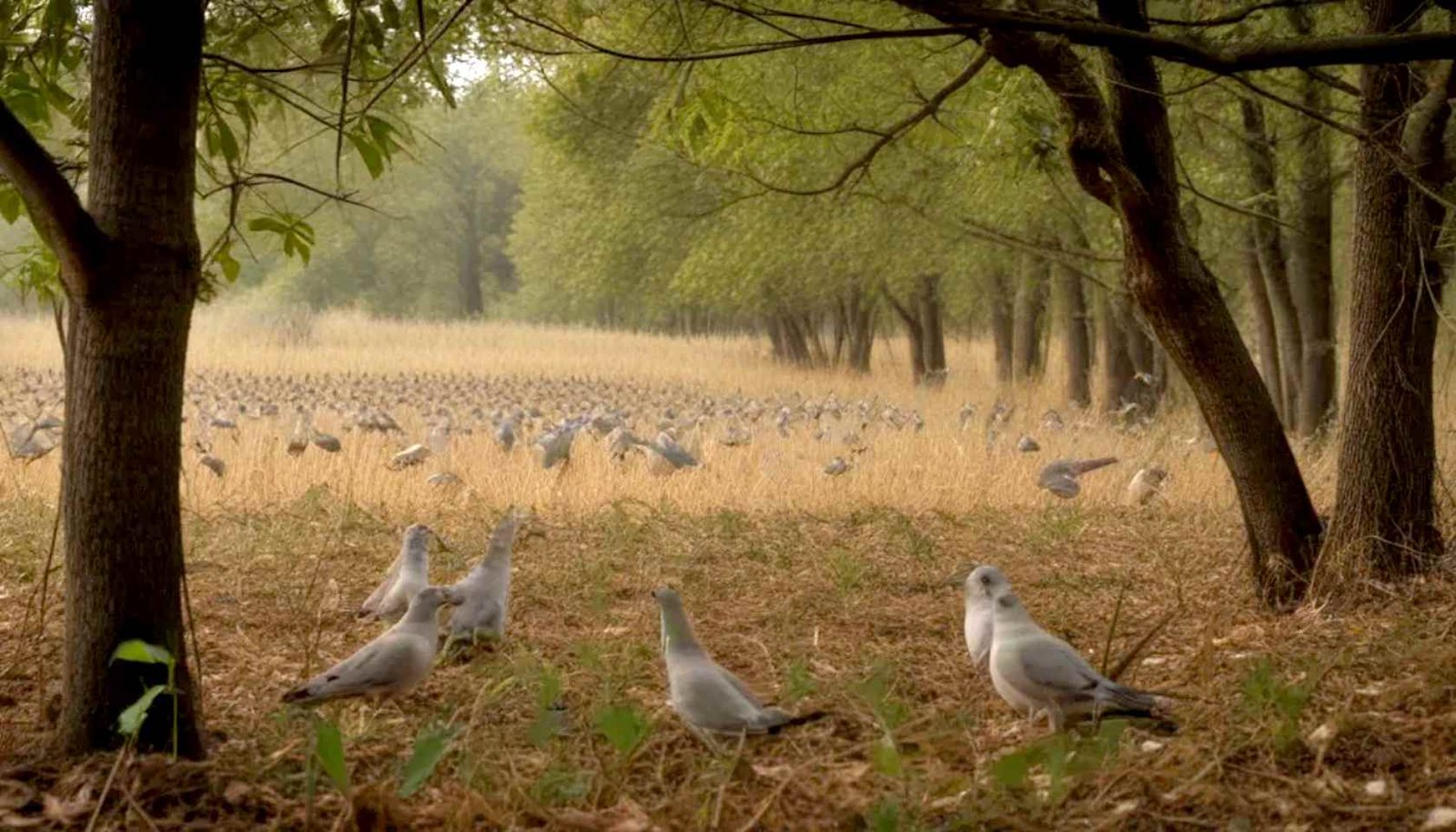There’s a special buzz in the Hoosier State as summer starts to fade. The evenings grow cooler, the fields turn gold, and the sudden, whistling flight of a speedy game bird gets any hunter’s heart racing. If you’re gearing up for some fast-paced action, you’ve come to the perfect place! This guide is your complete resource for everything you need to know about pursuing migratory birds in Indiana for the 2025-2026 period. We’ll cover precise dates, top species, essential maps and zones, license info, and key rules. Let’s get you prepared for a safe, successful, and incredibly fun hunt! 🌽
🎯 At a Glance: Indiana’s Flyway Timeline
Here’s a quick snapshot of the primary game birds covered in this guide.
| Bird Type | General Season Dates (2025) | Key Methods & Notes |
|---|---|---|
| Mourning Dove | Sept 1 – Oct 20 | Shotgun; Requires HIP certification |
| Eurasian Collared-Dove | Open Year-Round* | Shotgun; No closed season in most areas |
| White-winged Dove | No Open Season | Protected; Not legal game in IN |
*Always verify local ordinances as some cities may have restrictions.
📅 The Full Scoop on 2025-2026 Hunting Periods
Indiana offers a fantastic window for migratory bird hunters, with seasons designed to coincide with traditional migration patterns. Here’s the detailed breakdown you need to mark on your calendar.
Mourning Dove
- Dates: September 1 – October 20, 2025
- Daily Bag Limit: 15
- Possession Limit: 45
- Zones: Statewide
- Requirements: All hunters must have a valid hunting license and HIP certification.
Eurasian Collared-Dove
- Dates: Open year-round (No closed season)
- Daily Bag Limit: No limit
- Possession Limit: No limit
- Zones: Statewide, but always check for local restrictions.
- Requirements: Standard hunting license. HIP certification is not required for this species.
🗺️ Pro Tip: Some of my most memorable hunts have been on public lands in the southwest part of the state near old crop fields. Scouting ahead using the Indiana DNR’s online mapping tools is absolutely crucial for finding those active roosting and feeding areas!
🐦 Other Feathered Opportunities
While your focus might be on doves, these other small-game species share similar habitats and seasons, making for a fantastic mixed-bag outing.
- Bobwhite Quail
- Season: The 2025-2026 season is set for Nov 8, 2025 – Jan 10, 2026 (in open counties).
- Note: A classic pursuit that thrives in the same grassland and agricultural edges.
- Common Snipe
- Season: Sept 1 – Dec 16, 2025.
- Note: Requires HIP certification. Look for these “sky biscuits” in muddy edges of marshes and wet fields.
📜 The Rulebook: Key Indiana Regulations
Knowing the rules keeps you safe and on the right side of the law. Here are the must-know regulations for a wing-shooter.
- Shooting Hours: Legal shooting hours are from one-half hour before sunrise to sunset.
- Baiting: It is illegal to hunt migratory game birds over baited areas. A baited area remains off-limits for 10 days after all bait has been removed.
- Lead Shot: Non-toxic shot is required for all hunting on state-owned Fish & Wildlife Areas (FWAs). It is highly recommended everywhere else to protect the environment.
- License Validation: You must carry your physical hunting license, tag(s), and HIP permit on your person while in the field.
- Hunter Orange: Not required for bird hunting, but always a smart safety choice when hunting with others.
💰 What Will It Cost? 2025-2026 License & Permit Fees
Here’s a breakdown of the costs for residents and non-residents.
| License/Permit Type | Resident Fee | Non-Resident Fee |
|---|---|---|
| Annual Hunting License | $25 | $150 |
| HIP Certification (Migratory Birds) | Free | Free |
✅ What You Need to Legally Hunt
Before you head into the field, make sure you have these three things squared away:
- Indiana Hunting License: Required for all hunters.
- Hunter Education Certification: Mandatory for anyone born after December 31, 1986.
- HIP Certification: Required for all hunters pursuing mourning doves, snipe, or other migratory birds. This is free and can be added when you buy your license.
🎟️ You can easily purchase your license and add all necessary permits online through the Indiana DNR’s Hunt-Fish system, at any licensed vendor, or at a DNR customer service center.
❓ Frequently Asked Questions
Q: Can I use an electronic call for doves in Indiana?
A: Yes! Electronic calls are perfectly legal for attracting doves.
Q: Are there any youth-specific hunts?
A: Yes! Indiana offers a special Youth Waterfowl Hunt and other mentored opportunities. Dates are typically announced in the summer; check the Indiana DNR website for the 2025-2026 schedule.
Q: Where is the best public land to hunt in Indiana?
A: Some of the best public access can be found on State Fish & Wildlife Areas (FWAs) like Jasper-Pulaski, Glendale, and Pigeon River. Always consult the DNR’s public access maps before you go.
Q: Is there a possession limit for Eurasian collared-doves?
A: No. Since they are an invasive species, there are no bag or possession limits in Indiana.
🏁 Final Thoughts
Indiana’s 2025-2026 migratory bird season promises fantastic opportunities for both new and experienced shooters. The thrilling opener on September 1st for mourning doves is a tradition that kicks off the fall hunting calendar. Just remember to secure your license, get your HIP certification, review the regulations, and most importantly, practice your gun safety. Here’s to tight shots, full game bags, and beautiful sunrises in the Indiana outdoors! 👍
⚠️ Always refer to the current-year official regulations guide for the final word. Official Resource: Indiana DNR Hunting & Trapping Guide

